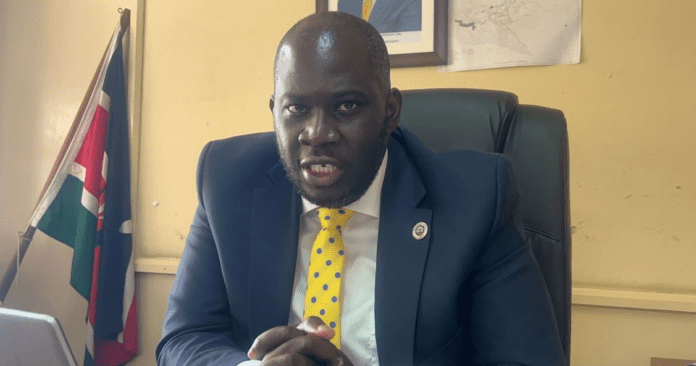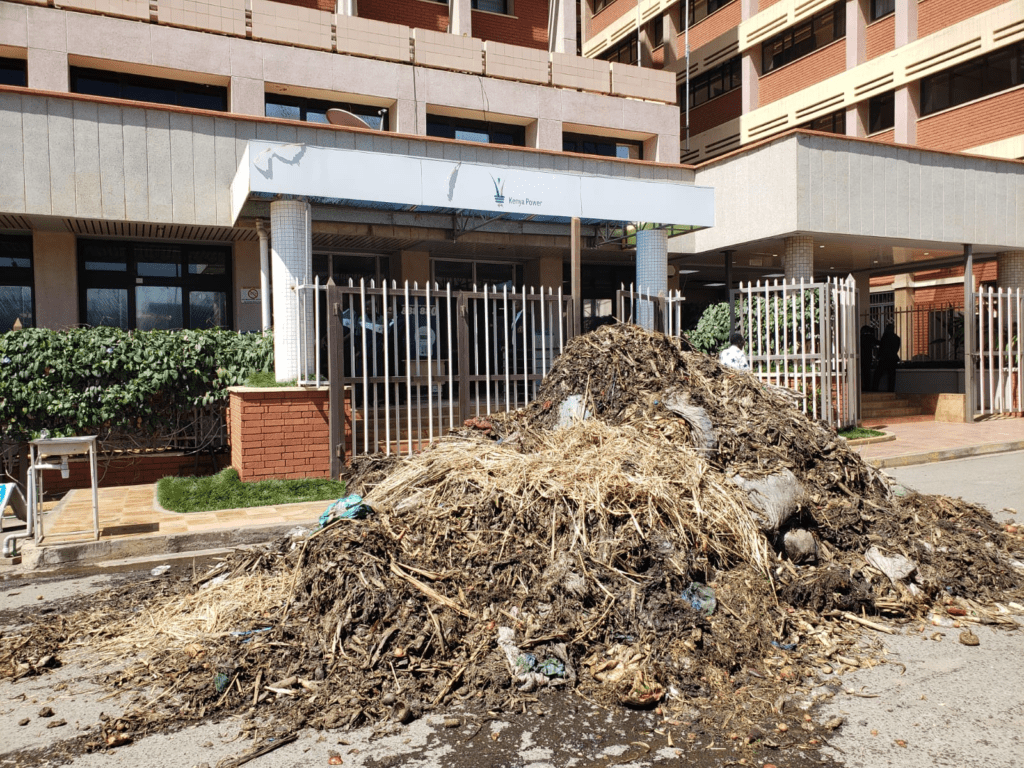
A dispute between the Nairobi City County Government and Kenya Power (KPLC) has escalated, with the county demanding Sh4.8 billion in unpaid wayleave fees, while KPLC insists City Hall owes it Sh3 billion in electricity bills.
On Monday, county officials stormed Kenya Power’s headquarters at Stima Plaza, dumped garbage at its entrances, clamped vehicles, and disconnected sewer lines in protest over the outstanding fees. County Secretary Godfrey Akumali dismissed claims that City Hall was in arrears, instead accusing KPLC of profiting from public infrastructure while failing to pay its dues.
“Let it be very clear, KPLC owes us Sh4.8 billion. They are making profits and announcing them publicly, yet they can’t pay their dues,” Akumali said.
Finance CEC Charles Kerich echoed similar sentiments, accusing Kenya Power of leasing power poles and transmission lines to internet service providers (ISPs) without remitting wayleave fees.
“KPLC now hosts optic cables and internet services. Those green and red cables on their poles—that’s internet. They are making money, yet they refuse to pay their debt. How are we supposed to pay ours too?” Kerich questioned.
The county claims letters demanding payment, sent in 2017, 2019, and 2020, have gone unanswered. The latest demand, issued on December 6, 2024, puts the outstanding amount at Sh4.83 billion, alongside Sh17 million in land rates for 2025.
Kenya Power Responds
In a statement on Monday, Kenya Power termed the county’s actions “unethical and unlawful,” accusing City Hall of harassment.
“At around 8:30 a.m., county officers, accompanied by armed police, stormed our headquarters, dumped a truckload of garbage at the main entrance, and clamped and towed vehicles belonging to staff and customers,” the statement read.
KPLC maintained that City Hall owes it Sh3 billion in electricity bills, which have increased by Sh1.3 billion over the past two years. The company noted that despite an agreement reached in December 2024—where Governor Johnson Sakaja committed to paying Sh60 million toward the old debt and Sh50 million for the current bill every month—the county has fallen short of its obligations.
“In January 2025, the county paid only Sh36 million, significantly below the required Sh330 million to cover bills for November, December, and January,” KPLC stated.
Due to the accumulated debt, Kenya Power disconnected electricity to several county offices on February 14. However, power was restored on February 21 after the county pledged to make a payment of Sh133 million.
Despite this, KPLC claims that later that evening, Nairobi City Water and Sewerage Company, under county instructions, cut water supply to Stima Plaza and other Kenya Power facilities, including Electricity House, Parklands Substation, and Roysambu Depot. Sewer lines at Stima Plaza and Electricity House were also blocked.

Legal Wrangles Over Wayleave Fees
KPLC has rejected the county’s claim of unpaid wayleave fees, citing the Energy Act, 2019. The law states that no public body can charge levies on public energy infrastructure without the consent of the Cabinet Secretary in writing.
The company also emphasized the need for all customers, including the county, to pay their bills on time to sustain the energy sector and the economy.
The dispute, which dates back to 2007, remains unresolved as Kenya Power maintains it has no obligation to pay wayleave fees, while City Hall insists the power distributor must clear its debt.





![SHA Suspends Dozens of Health Facilities Over Alleged Fraud [LIST]](https://citymirror.ke/wp-content/uploads/2024/12/image-14-218x150.png)
